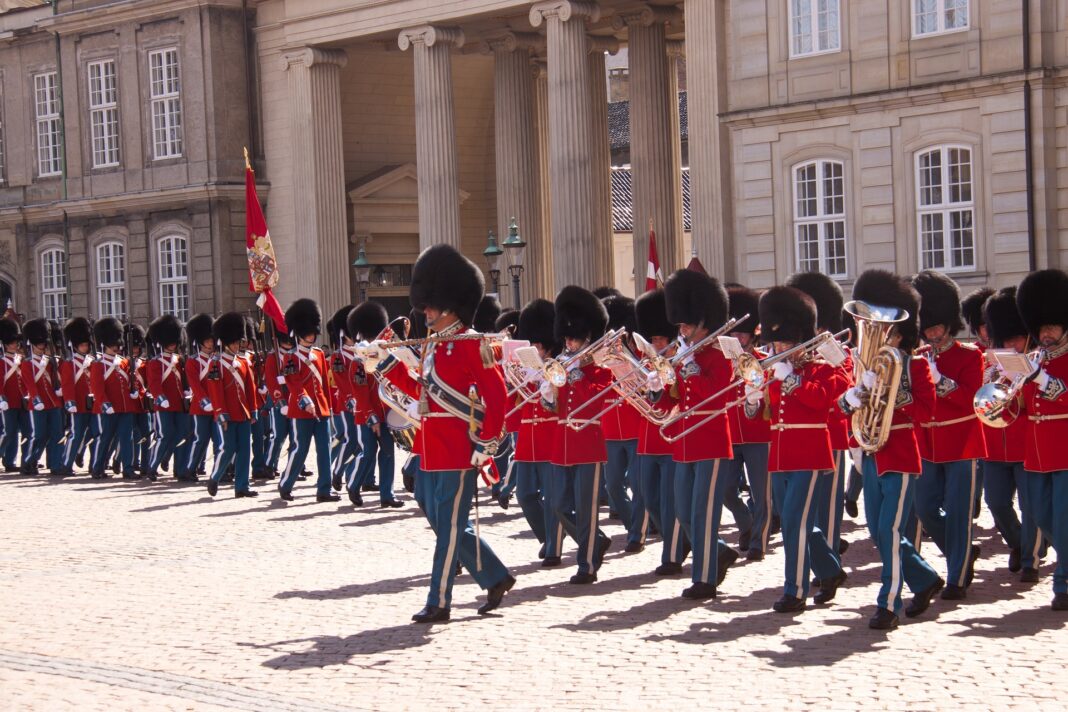COPENHAGEN, Denmark (AP) — In a historic moment, Queen Margrethe II of Denmark made her final appearance as monarch, concluding her last New Year celebrations before her scheduled abdication on January 14. The queen’s decision to step down after an illustrious 52-year reign marks a significant chapter in Danish history, as she becomes the first Danish monarch to abdicate the throne since 1146.
Thousands of well-wishers lined the streets, braving freezing temperatures, strong winds, and snow, to cheer the world’s last reigning queen during her farewell procession. Queen Margrethe II, known for her sense of responsibility, propriety, and commitment to her duties, has remained an extremely popular figure in Denmark throughout her reign. Her brightly colored clothing, love of archaeology, and chain smoking have made her a distinctive and beloved monarch.
As the longest-serving monarch in Denmark’s history, Queen Margrethe II has played an important role in shaping the nation’s identity. Her decision to pass the throne to her oldest son, Crown Prince Frederik, marks the beginning of a new era for the Danish monarchy.
Crown Prince Frederik, 55, the Count of Monpezat, is married to Crown Princess Mary, 51, born Mary Donaldson in Australia. With their union, she became HRH Crown Princess Mary Elizabeth of Denmark, and she will now become the first Australian-born queen consort. The couple is set to be crowned as King and Queen of Denmark, bringing fresh perspectives and a modern touch to the royal family.
Crown Prince Frederik has dedicated his life’s work to addressing climate change, while Crown Princess Mary has gained recognition for her advocacy in LGBTQI+ causes, maternal health, and women’s reproductive rights. Their commitment to pressing global issues reflects a shift toward a more socially conscious monarchy.
The queen’s final public appearance took place in the so-called Gold Coach, pulled by six white horses, a traditional mode of transport used during the New Year’s fete. Escorted by members of the Hussar Regiment in their distinctive blue uniforms with red jackets, the queen’s journey symbolized the end of an era and the beginning of a new reign.
Throughout the week leading up to her abdication, Queen Margrethe II held a series of events to bid farewell to the Danish government, parliament, top civilian and military officials, as well as foreign diplomats. The transition of power, scheduled for January 14, is expected to be a moment of mixed emotions, with Danes both mourning the departure of their beloved queen and celebrating the ascension of the new royal couple.
In her annual New Year televised address on December 31, Queen Margrethe II revealed that back surgery in early 2023 prompted reflections on the future and when to pass on the responsibilities of the crown to her son. “I have decided that now is the right time,” she announced.
When Queen Margrethe II ascended the throne in 1972 after the passing of her late father, King Frederik IX, only 42% of Danes supported the monarchy. However, the most recent surveys indicate that a remarkable 84% of Danes now favor the continuation of the monarchy, underlining the enduring legacy of a monarch who has been a stalwart figure in the hearts of her people. As Denmark bids farewell to its queen, a new chapter in its royal history is set to unfold under the leadership of Crown Prince Frederik and Crown Princess Mary.



